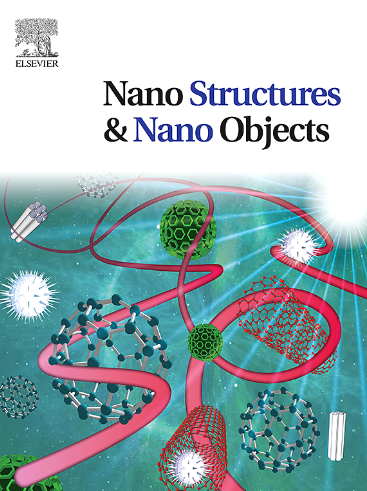Microwave-assisted synthesis of nanocrystalline hydroxyapatite using calcium supplies from green mussel shells with synthesis time optimization
IF 5.45
Q1 Physics and Astronomy
引用次数: 0
Abstract
Nanocrystalline hydroxyapatite (HA) is utilized widely in biomaterials due to its capacity to enhance bone growth and compatibility with various manufacturing techniques. Traditional hydrothermal methods for synthesizing HA from green mussel shells (Perna viridis) typically involve long synthesis times, high temperatures, and elevated costs. This study explores a microwave-based hydrothermal method as a more cost-effective and efficient alternative for synthesizing HA from green mussel shell waste. The synthesis involves blending calcined green mussel shells with diammonium hydrogen phosphate [(NH4)2HPO4], followed by microwave irradiation for 1, 3, 5, and 7 minutes at 80, 240, and 400 watts. Analysis of the synthetic powder used analytical techniques such as X-ray diffraction (XRD), Fourier transform infrared spectroscopy (FTIR), and scanning electron microscopy with energy-dispersive X-ray spectroscopy (SEM/EDX). The synthesis conditions were optimized using a microwave power of 240 watts and a 3-minute synthesis duration, yielding HA with a nano-crystallite size of 1.5–1.7 nm and a HA crystalline weight percentage of 90.7 %. FTIR analysis confirmed functional groups such as phosphate (PO43), hydroxyl (OH−), and carbonate (CO3), indicating the formation of a carbonated nanocrystalline HA phase. The synthesized powder displayed an irregular structure with agglomeration containing nanocrystalline HA and demonstrated potential for biomaterial applications.
绿贻贝钙源微波辅助合成纳米羟基磷灰石并优化合成时间
纳米羟基磷灰石(HA)由于其促进骨生长的能力和与各种制造技术的兼容性而广泛应用于生物材料中。从绿贻贝壳(Perna viridis)中合成透明质酸的传统水热方法通常需要较长的合成时间、较高的温度和较高的成本。本研究探索了一种基于微波的水热法,作为一种更具成本效益和效率的替代方法,从绿色贻贝废物中合成透明质酸。该合成方法包括将煅烧的绿贻贝与磷酸氢二铵[(NH4)2HPO4]混合,然后在80、240和400瓦的微波下照射1,3,5和7 分钟。利用x射线衍射(XRD)、傅里叶变换红外光谱(FTIR)和扫描电子显微镜(SEM/EDX)等分析技术对合成粉末进行分析。以240瓦的微波功率和3分钟的合成时间优化合成条件,制得的HA纳米晶尺寸为1.5 ~ 1.7 nm, HA晶重率为90.7 %。FTIR分析证实了磷酸(PO43)、羟基(OH−)和碳酸盐(CO3)等官能团,表明形成了碳化纳米晶HA相。合成的羟基磷灰石粉末具有不规则结构和团聚结构,具有生物材料应用潜力。
本文章由计算机程序翻译,如有差异,请以英文原文为准。
求助全文
约1分钟内获得全文
求助全文
来源期刊

Nano-Structures & Nano-Objects
Physics and Astronomy-Condensed Matter Physics
CiteScore
9.20
自引率
0.00%
发文量
60
审稿时长
22 days
期刊介绍:
Nano-Structures & Nano-Objects is a new journal devoted to all aspects of the synthesis and the properties of this new flourishing domain. The journal is devoted to novel architectures at the nano-level with an emphasis on new synthesis and characterization methods. The journal is focused on the objects rather than on their applications. However, the research for new applications of original nano-structures & nano-objects in various fields such as nano-electronics, energy conversion, catalysis, drug delivery and nano-medicine is also welcome. The scope of Nano-Structures & Nano-Objects involves: -Metal and alloy nanoparticles with complex nanostructures such as shape control, core-shell and dumbells -Oxide nanoparticles and nanostructures, with complex oxide/metal, oxide/surface and oxide /organic interfaces -Inorganic semi-conducting nanoparticles (quantum dots) with an emphasis on new phases, structures, shapes and complexity -Nanostructures involving molecular inorganic species such as nanoparticles of coordination compounds, molecular magnets, spin transition nanoparticles etc. or organic nano-objects, in particular for molecular electronics -Nanostructured materials such as nano-MOFs and nano-zeolites -Hetero-junctions between molecules and nano-objects, between different nano-objects & nanostructures or between nano-objects & nanostructures and surfaces -Methods of characterization specific of the nano size or adapted for the nano size such as X-ray and neutron scattering, light scattering, NMR, Raman, Plasmonics, near field microscopies, various TEM and SEM techniques, magnetic studies, etc .
 求助内容:
求助内容: 应助结果提醒方式:
应助结果提醒方式:


